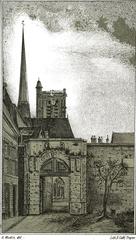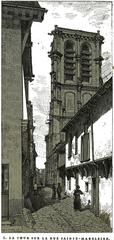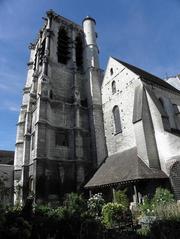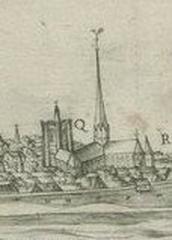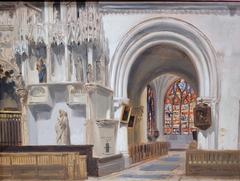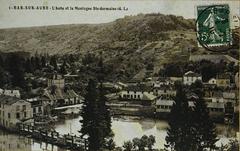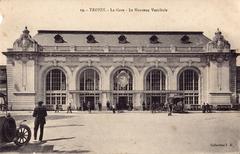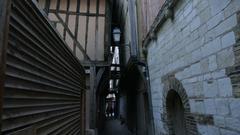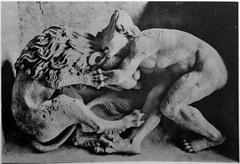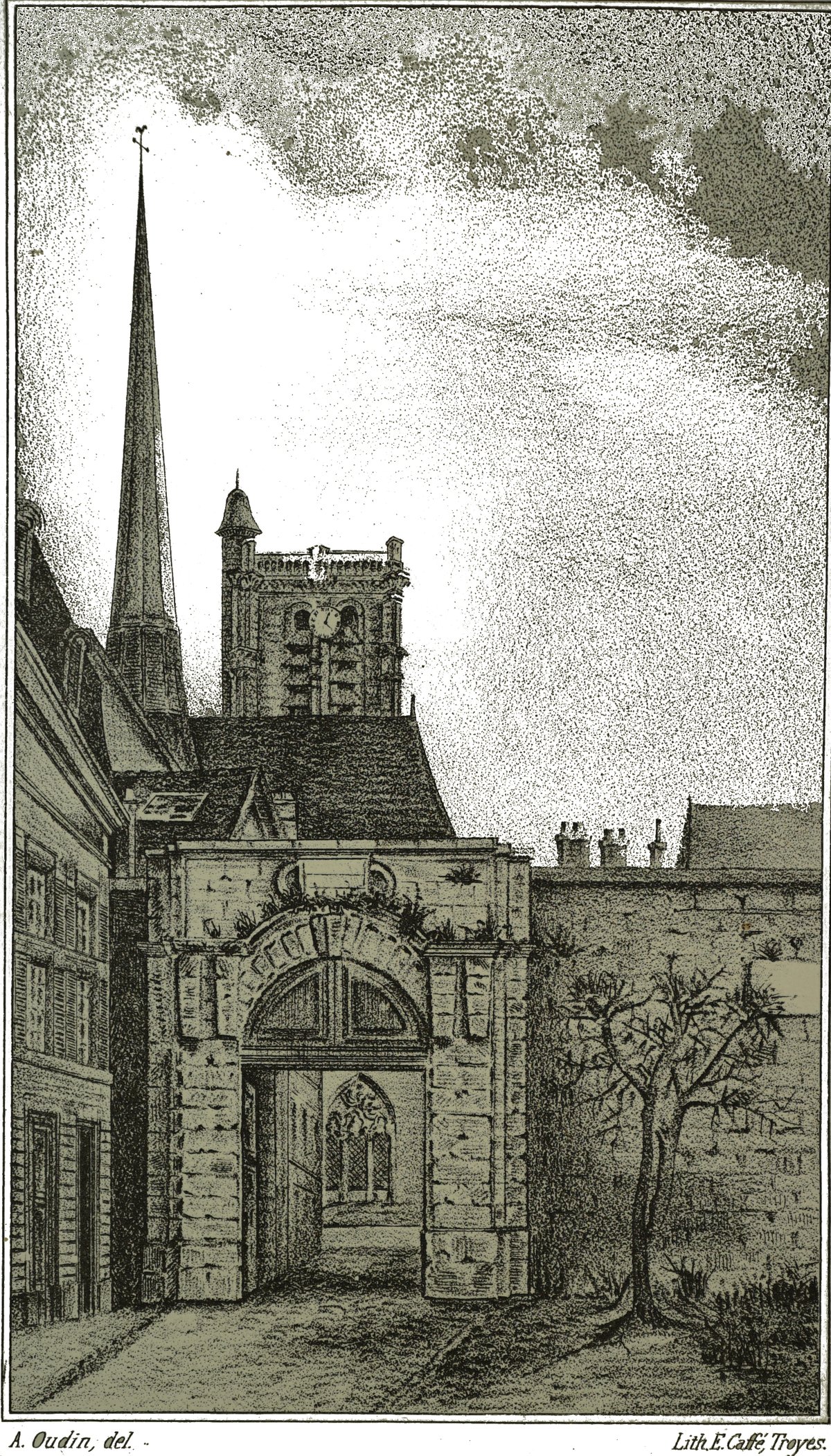
Comprehensive Guide to Visiting Église de la Madeleine in Troyes, France
Date: 31/07/2024
Introduction
Welcome to the Église de la Madeleine in Troyes, a stunning monument that epitomizes the rich historical and architectural heritage of this charming French city. This comprehensive guide will navigate you through the church’s fascinating past, its architectural marvels, and essential visitor information, ensuring a fulfilling and memorable visit.
Église de la Madeleine, dating back to the late 12th century, is not just one of the oldest churches in Troyes but also a remarkable example of architectural evolution. Initially constructed in 1190, the church has undergone numerous transformations, embracing Gothic and Renaissance styles over the centuries (Columbia University). The Flamboyant Gothic apse and choir, the Renaissance-style tower, and the intricate stone rood screen are just a few highlights that make this church an architectural treasure (Patrimoine-Histoire).
Inside, visitors can marvel at the exceptional 16th-century stained glass windows and sculptures that reflect the high artistic achievement of the period. Recognized as a historical monument since 1840, Église de la Madeleine not only preserves its architectural grandeur but also its cultural significance, making it a must-visit for history enthusiasts and art lovers alike (Wikipedia).
This guide will provide you with all the practical information you need, including visiting hours, ticket details, guided tour options, and tips for making the most of your visit. Whether you are an architecture buff, a history enthusiast, or a casual traveler, Église de la Madeleine offers a unique glimpse into the past and a rich cultural experience.
Table of Contents
- Introduction
- Historical Background
- Architectural Highlights
- Visitor Information
- Special Events and Seasonal Highlights
- Visitor Tips for a Memorable Experience
- FAQ
- Conclusion
Historical Background
Early Beginnings and Gothic Transformation
The Église de la Madeleine in Troyes, France, is a historical gem that dates back to the late 12th century, around 1190. The initial construction featured a double nave aisle and a non-projecting transept, characteristic of the period’s architectural style (Columbia University).
By the early 13th century, the church embraced the nascent Gothic style, undergoing significant reconstruction. The Gothic transformation included the rebuilding of the nave while retaining some Romanesque elements. The three-storey elevation, featuring a stocky arcade, an elongated triforium, and deep-set clerestory windows, reflects this change (Patrimoine-Histoire).
Renaissance Renovations
In the 16th century, Église de la Madeleine underwent extensive renovation and expansion. Around 1500, the apse and choir were renovated in the Flamboyant Gothic style, a more ornate form of Gothic architecture. This period also saw the addition of a trapezoidal three-sided hemicycle, surrounded by hexagonal-vaulted cells uniting the ambulatory with the three radiating chapels (Columbia University).
One of the most significant additions was the construction of the choir screen, or rood screen, by Master Jean Gailde in the early 16th century. This masterpiece of intricate stone lacework separates the nave from the choir and is one of the few remaining examples of such craftsmanship in France (Live the World).
Preservation and Recognition
Église de la Madeleine’s historical and architectural significance has been recognized through its classification as a historical monument. The church was first listed in 1840, with the portal of the former cemetery added in 1926 (Wikipedia).
Preservation efforts have ensured that its numerous artistic and architectural elements remain intact for future generations. Notable elements include stained glass windows depicting the Tree of Jesse, a Genesis scene featuring a Heavenly Father dressed as a pope, and a Passion scene donated in 1484 (Patrimoine-Histoire).
Architectural Highlights
Structural Elements
The architectural evolution continued with the addition of a Renaissance-style tower in 1525, enhancing its aesthetic and historical value. The tower, along with the Flamboyant Gothic portal of the former cemetery, exemplifies the blend of Gothic and Renaissance styles that characterize the church (Patrimoine-Histoire).
The Jubé
One of the most striking features of Église de la Madeleine is its jubé, or rood screen, constructed between 1508 and 1517. This stone structure, considered one of the finest examples of flamboyant Gothic architecture, was sculpted by Jehan Guayde, a renowned master mason and architect from Troyes. The jubé is a masterpiece of intricate stone carving, often described as “stone lace” due to its delicate and detailed design (Live the World).
Stained Glass Windows
Inside, the church boasts artistic treasures like the 15th-century statue of Saint Martha and the 16th-century stained glass windows depicting scenes from Genesis, showcasing the exceptional skill of Troyes’ glass painters (Lonely Planet).
Sculptural Works
The church houses several significant sculptures, including a highly acclaimed polychrome stone statue of Saint Martha, considered one of the finest examples of Troyes sculpture. This statue, along with others in the church, reflects the high level of artistic achievement in the region during the medieval period (Patrimoine-Histoire).
Visitor Information
Visiting Hours and Tickets
Église de la Madeleine is open to the public throughout the year, with varying hours depending on the season. From April 1 to October 31, it is open from Monday to Saturday, 9:30 am to 12:30 pm and 2 pm to 6 pm, and on Sundays from 2 pm to 6 pm. During the low season, from November 1 to March 31, the church is open from Monday to Saturday, 9:30 am to 12:30 pm and 2 pm to 5 pm, and on Sundays from 2 pm to 5 pm (Troyes La Champagne).
Guided Tours and Audioguides
To enhance the visitor experience, audioguides are available, offering a 20-minute tour of the church in four different languages. These guides provide detailed commentary on the church’s history and architectural features, allowing visitors to explore at their own pace (Live the World).
Nearby Attractions and Travel Tips
While visiting Église de la Madeleine, explore other historical sites in Troyes, such as the Saint-Urbain Basilica and the Troyes Cathedral. The city is also known for its charming half-timbered houses and vibrant marketplaces.
Accessibility
The church is accessible to visitors with disabilities, ensuring that everyone can appreciate its historical and architectural beauty.
Special Events and Seasonal Highlights
Throughout the year, Église de la Madeleine hosts various special events and religious ceremonies that can provide a unique and enriching experience for visitors. These events may include concerts, art exhibitions, and seasonal celebrations such as Christmas and Easter services. Checking the church’s event calendar in advance can help visitors plan their trip to coincide with these special occasions (Explore Grandest).
Visitor Tips for a Memorable Experience
Photography
Photography is generally allowed inside Église de la Madeleine, but it is always best to check for any specific restrictions or guidelines upon arrival. The church’s stunning stained-glass windows and intricate architectural details provide excellent photo opportunities, so be sure to bring a camera or smartphone to capture the beauty of this historic site.
Dress Code
As Église de la Madeleine is a place of worship, visitors are encouraged to dress modestly and respectfully. This typically means avoiding overly casual attire such as shorts and tank tops. Comfortable walking shoes are also recommended, as the church’s stone floors and surrounding cobblestone streets can be uneven.
Local Etiquette
When visiting Église de la Madeleine, it is important to be mindful of local customs and etiquette. This includes speaking quietly, especially during services or when other visitors are present, and refraining from using mobile phones or other electronic devices that may cause disruptions. Additionally, visitors should respect any areas that are designated as off-limits or reserved for worship.
FAQ
What are the visiting hours of Église de la Madeleine?
The church has varying hours depending on the season. Check the official website for the most up-to-date information.
Are there guided tours available?
Yes, audioguides are available in four languages, offering a 20-minute tour of the church’s history and architectural features.
Is the church accessible to visitors with disabilities?
Yes, the church is accessible to visitors with disabilities.
What other attractions are nearby?
Nearby attractions include the Saint-Urbain Basilica, Troyes Cathedral, and the city’s charming half-timbered houses.
Conclusion
Église de la Madeleine in Troyes is a true marvel, capturing the essence of the city’s historical and architectural heritage. From its early beginnings in the 12th century to its Renaissance renovations, the church stands as a testament to the evolving architectural styles and artistic achievements over the centuries. Its intricate stone rood screen, stunning stained glass windows, and significant sculptures offer a unique glimpse into the rich cultural history of Troyes (Explore Grandest).
A visit to Église de la Madeleine is not only a journey through architectural history but also an opportunity to immerse oneself in the vibrant cultural landscape of Troyes. With detailed visitor information, guided tours, and nearby attractions, this guide ensures that you have all the necessary details to make your visit memorable. Whether you’re exploring the church’s architectural marvels or participating in special events, Église de la Madeleine promises a fulfilling and enriching experience (The Crazy Tourist).
Plan your visit today to explore this historical gem and discover the timeless beauty of Église de la Madeleine. For more information, download our mobile app, Audiala, and follow us on social media to stay updated on the latest events and news about this remarkable site.
References
- Columbia University. (n.d.). Troyes - Église de la Madeleine. Retrieved from Columbia University
- Patrimoine-Histoire. (n.d.). Troyes - Sainte-Madeleine. Retrieved from Patrimoine-Histoire
- Wikipedia. (n.d.). Église de la Madeleine de Troyes. Retrieved from Wikipedia
- Explore Grandest. (n.d.). Bubbles of Culture: Sainte-Madeleine Church, the Magnificent One. Retrieved from Explore Grandest
- The Crazy Tourist. (n.d.). 15 Best Things to Do in Troyes (France). Retrieved from The Crazy Tourist
